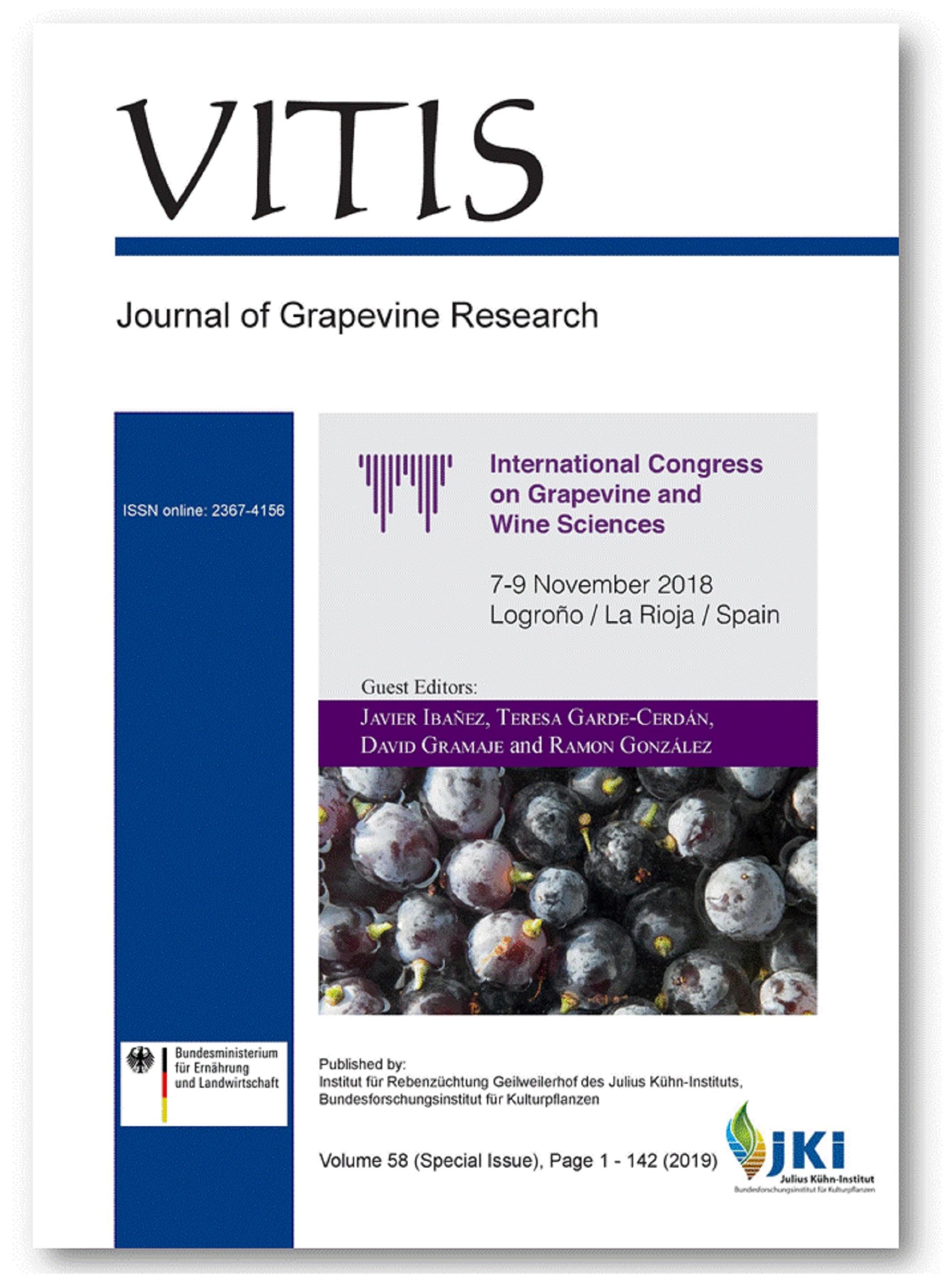Uncovering Northeast Portugal grapevine's varietal legacy
DOI:
https://doi.org/10.5073/vitis.2019.58.special-issue.89-93Keywords:
biodiversity; chlorotype; genotyping; microsatellite; Vitis vinifera L.Abstract
Northeast Portugal comprises the wine denominations "Douro" and "Trás-os-Montes". There are more than one hundred grapevine cultivars registered suitable for wine production in these regions (ministerial-orders number 1204/2006 and 383/2017), however only a few are actually used for winemaking. In this sense, the identification of the varieties cultivated in past times may widen the number of varieties and can be an important step to take advantage of all the potential of these regions' grapevine biodiversity. The conservation of these vanishing genetic resources boosts a greater products' diversification and it can be considered strategic in the improvement and valorization of "Douro" and "Trás-os-Montes" PDO wines. Moreover, it is imperative to identify, before to characterize and preserve, plants of late-maturing grape varieties planted in regions with extremely high temperatures and precipitation deficits which still maintain grape yield and produce very well-known quality wines. Hence, the main goals of this study were to prospect and characterize, through nuclear and chloroplast SSR analysis, plants of old vineyards that constitute a broad representation of the grapevine genetic patrimony of "Douro" and "Trás-os-Montes" regions.
Downloads
Additional Files
Published
Issue
Section
License
The content of VITIS is published under a Creative Commons Attribution 4.0 license. Any user is free to share and adapt (remix, transform, build upon) the content as long as the original publication is attributed (authors, title, year, journal, issue, pages) and any changes to the original are clearly labeled. We do not prohibit or charge a fee for reuse of published content. The use of general descriptive names, trade names, trademarks, and so forth in any publication herein, even if not specifically indicated, does not imply that these names are not protected by the relevant laws and regulations. The submitting author agrees to these terms on behalf of all co-authors when submitting a manuscript. Please be aware that this license cannot be revoked. All authors retain the copyright on their work and are able to enter into separate, additional contractual arrangements.



